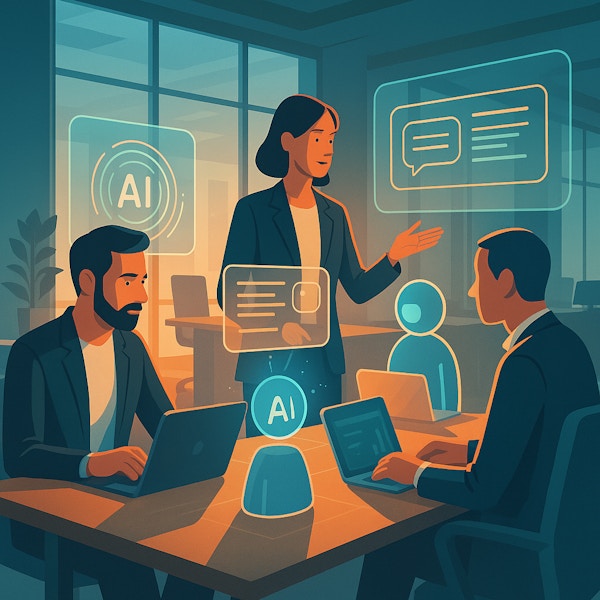AI Agents in Business: From OpenAI’s Guide to Practical Application with AÓNIDES
AI agents are much more than virtual assistants. Capable of executing complex tasks, making decisions, and coordinating with business tools, they represent the new frontier of intelligent automation. In this article, we analyze OpenAI’s guide and explain how AÓNIDES translates its theory into business practice.
Published on: August 29, 2025

Introduction
AI agents are becoming the new frontier of intelligent automation. We’re no longer just talking about chatbots or virtual assistants, but about systems capable of making decisions, executing complex tasks, and coordinating with other business tools.
OpenAI recently published a 32 pages document A Practical Guide to Building Agents.
At AÓNIDES, we have analyzed this guide to extract its key insights, but above all, to translate it into the reality of Spanish companies seeking efficiency and agility in their daily operations.
What exactly is an AI agent?
According to OpenAI, an agent is a system that acts on behalf of the user, with three core characteristics:
It uses an LLM (large language model) to decide steps, detect errors, and know when a task has been completed.
It connects to external tools (APIs, business systems, databases) in a dynamic and modular way.
It can hand control back to a human if it detects limits, errors, or risks.
In practice, this means an AI agent can handle customer requests, prepare financial reports, or coordinate logistics processes simultaneously.
When should you use agents?
The guide identifies three contexts where agents outperform traditional automations:
Complex decisions: for example, approving or rejecting a return considering the customer’s history.
Changing regulations: such as security or compliance checks, where maintaining manual rules becomes unsustainable.
Unstructured data: interpreting contracts, emails, or forms in natural language.
By contrast, simple, repetitive tasks remain more efficient with conventional automations.
How to design an effective AI agent
OpenAI’s experience and AÓNIDES’s practice point to three key pillars:
Models: choosing the right LLM for the task (not always the biggest or most expensive).
Tools: well-defined APIs that allow the agent to access reliable information.
Instructions: carefully designed prompts to minimize errors and ensure consistency.pts diseñados para minimizar errores y asegurar consistencia.
“The difference between a brilliant agent and an ineffective one is not the model itself, but the design of its workflow.”
Scaling towards multi-agent environments
An agent can operate alone, but the real potential appears when multiple specialized agents are orchestrated:
A financial agent that generates accounting scenarios.
A data agent that integrates information from Microsoft Fabric or Azure Functions.
A communication agent that prepares executive summaries for management.
The key lies in coordination (a supervising “manager agent”) and in having guardrails that ensure control, transparency, and traceability.
Security and control: the big challenge
OpenAI emphasizes the importance of incorporating “guardrails.” At AÓNIDES, we see this as equally critical:
Instructions that anticipate edge cases.
Human supervision for critical tasks.
Complete traceability of decisions and actions.
In regulated environments (healthcare, finance, public sector), these elements are not optional; they are essential.
Our vision at AÓNIDES
OpenAI’s guide is a valuable starting point, but we believe that for an agent to be truly useful, it must:
Integrate with existing systems (ERP, CRM, BI).
Connect with automation platforms like Power Platform, Zapier, Make, or n8n.
Provide business-specific value, not just serve as a “tech demo.”
In sectors such as logistics, industry, or retail, we are already seeing how agents help companies:
Reduce reporting and data analysis times.
Automate complex administrative tasks.
Generate actionable insights in Power BI without manual intervention.
Conclusion
Building AI agents is not just a technical exercise. It requires strategic design, integration with business processes, and a rigorous focus on security and oversight.
At AÓNIDES, we help companies turn theory into real solutions, tailored to their context, systems, and objectives.
Is your company ready to take the leap into intelligent automation with AI agents?